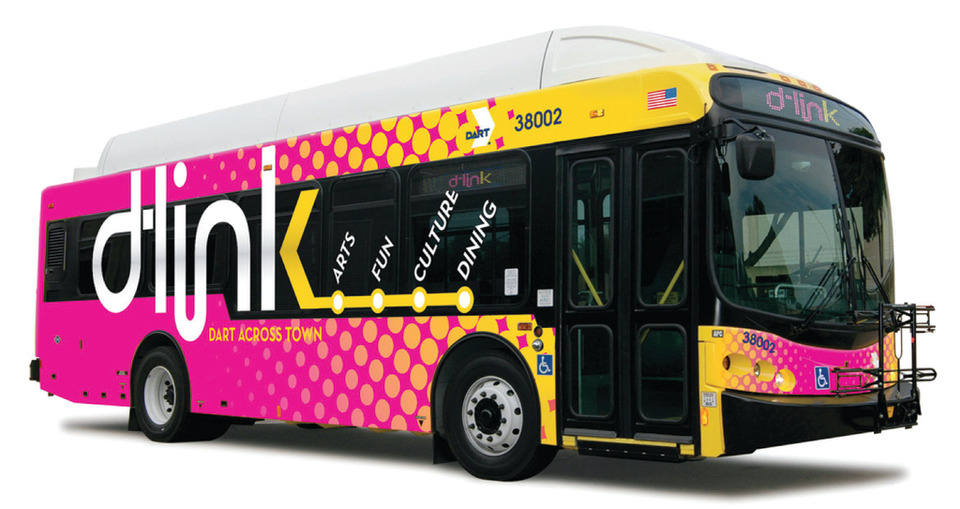Dallas Area Rapid Transit’s D-Link service has been withering on the vine for a while now. Last fall, DART staff told the board that the ridership has not been what it should be, and that the $1 million subsidy for the free bus ride downtown, which is provided by a partnership between DART and Downtown Dallas Inc., amounts to about $11 per rider. That’s a lot to cough up in an era when most people get around the CBD on scooters or in Lyfts.
Now it looks like D-Link will likely be eliminated, with the service potentially replaced with an app-based, on-demand shuttle service.
On the surface, this seems like a loss. As the CBS 11 report shows, for some people, particularly downtown residents, the D-Link service could be quite useful. It connects the two existing streetcar lines—one stretching into Oak Cliff, the other up McKinney into Uptown—as well as a few downtown spots, like the Farmers Market, Main St., the Arts District, and the convention center. The current route, in fact, mirrors the layout of a proposed downtown circulatory streetcar line that DART has been planning for some time.
D-Link’s history, however, has fluctuated between usefulness and confusion. When it launched, it linked downtown to Oak Cliff, extending beyond the current layout of the streetcar. When the streetcar opened, D-Link was re-routed. For a time, its twisted, convoluted route, which attempted to duck-duck-goose every spot in the DDI brochure (running into the Cedars and back into downtown on crisscrossing routes), was difficult to follow. Today’s route is more legible, but ridership continues to fall.
We shouldn’t be surprised. From the beginning, D-Link was something of an oddball service, an attempt to introduce a new way of riding DART that could appeal to urban dwellers and visitors. But it was a band-aid on a hemorrhaging system. It’s compact design meant it was useful to too few people, and it was targeted at people who are already accustomed to using other modes of transit. On the surface, it looked like the kind of line that was mimicking a streetcar-style of bus service. But it launched within the context of the broader system, so it was more like an orphan line that that didn’t connect with or fit into the logic of most DART riders’ broader commutes.
D-Link demonstrated that patchwork service additions are ineffective within the context of a bus system that needs to be completely reconsidered. We’ve written about this before. Cities around the country are beginning to realize that the only way to increase ridership on bus systems is to improve levels of service. This means applying a streetcar-style logic to the bus system layout, with dedicated lanes, timed signals, destination bus stops, and fixed linear routes along major transit corridors that make the system reliable and understandable.
Houston was a leader on this. Austin has adopted a similar model. Columbus, Ohio and Richmond, Virginia followed suit, and all have seen upticks in ridership. Baltimore’s year-old redo has had some hiccups—mostly related to implementation issues—but its ridership has also increased (if only slightly) since the redesign.
D-Link was a nice idea, but it was never going to really work as a viable transit option. It was an attempt to put out a small fire—access to transit downtown—without adequately rethinking the larger fundamental reasons why the system doesn’t work well.





